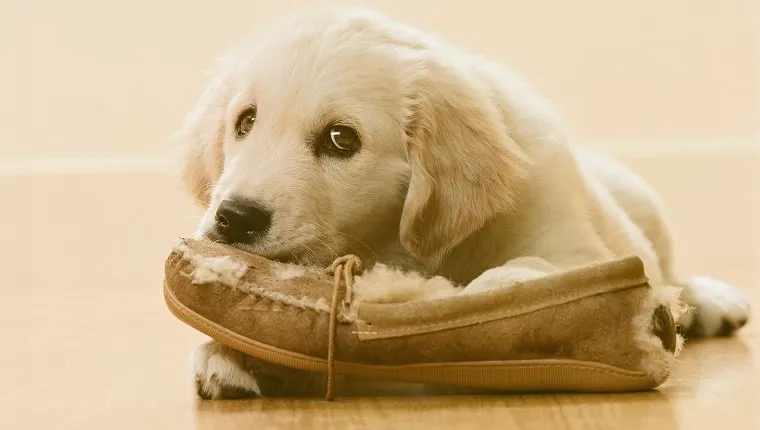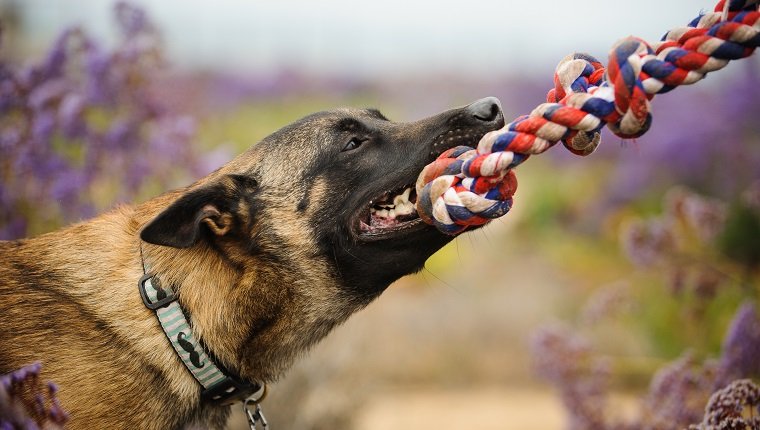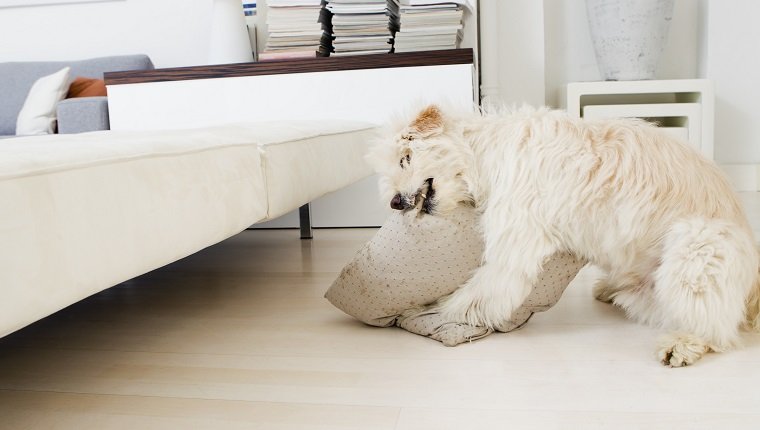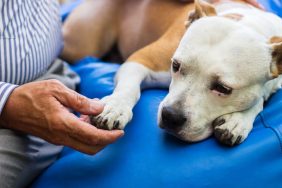Pica in dogs is a condition where the animal feels compelled to eat objects that are not food items. These can include metal, plastic, cloth, garbage, dirt, rocks, paper, or even feces.
Usually pica is a psychological, compulsive behavior issue for dogs, but it may also result from medical issues or poor nutrition. It’s important to work on eliminating this behavior because ingesting foreign objects can lead to digestive system blockages, choking, poisoning, or other problems.
If you see the signs of pica in your dog, then you must consult your veterinarian for a proper diagnosis. They’ll be able to find out if there’s an underlying cause and provide treatment.
If the behavior is caused by psychological issues, then you may need to work with a behaviorist and make some lifestyle changes to stop the compulsive eating.
Here’s what you should know about the symptoms, causes, and treatments for pica in dogs.
Symptoms Of Pica In Dogs

The main symptom of pica in dogs is, of course, eating non-food objects, though there are a number of other symptoms that are caused by consuming these items. Furthermore, symptoms may vary depending on which objects or substances a dog eats.
Here are some of the effects your dog might suffer from if they eat non-food items:
- Ulcers
- Vomiting
- Diarrhea
- Bad breath
- Straining or inability to defecate
- Black, tarry stools
- Burping
- Drooling
- Abdominal pain
- Gastrointestinal blockage
- Choking
- Sneezing or coughing (if object blocks the respiratory tract)
- Infection, especially if objects are dirty or contaminated (feces, for example)
- Poisoning, depending on which substances are on objects (household cleaner or medication bottles, for instance)
- Lethargy
- Collapse
Causes Of Pica In Dogs

The causes of pica in dogs can be broken down into psychological issues and medical issues. Most cases of pica are related to psychological problems that require behavior modification, but there are many medical conditions that need veterinary treatment.
Here are several psychological reasons dogs might suffer from pica:
- Anxiety, especially separation anxiety
- Stress
- Attention-seeking
- Lack of mental or physical stimulation
- Depression
- Lack of socialization
- Frustration
Here are several medical, non-psychological reasons dogs might eat non-food items:
- Teething (in puppies)
- Inflammatory bowel disease
- Diabetes
- Parasitic infection
- Anemia
- Stomach tumor
- Neurological diseases
- Vitamin deficiency
- Malnutrition or malabsorption
- Unbalanced diet
- Hyperthyroidism
- Exposure to corticosteroids or anti-seizure medication
Treatments For Pica In Dogs

The treatment for pica in dogs depends on whether the condition is psychological or caused by an underlying medical condition.
For psychological behavior issues, increasing physical and mental stimulation with exercise can reduce boredom and stress. Herbal remedies can also help calm some anxiety.
Doggy daycare may help with socialization and further prevent boredom or anxiety if no one is home during the day.
Durable chew toys can divert attention from objects that dogs may want to ingest. There are several sprays available on the market — as well as homemade sprays — that can deter dogs from eating non-food items.
Professional behaviorists may be more suited to help dogs with pica than vets when the cause is psychological. You should follow their instructions closely and not punish your dog or yell because these can increase anxious or attention-seeking behavior.
If the cause is medical, your vet will treat it accordingly. They can prescribe medication for infections or thyroid issues, for example.
If medication is causing the problem, then it should be discontinued. If there’s an issue with malnutrition or unbalanced diet, then dietary changes will be prescribed, and dogs may be tested for nutrient or vitamin deficiency.
Whether the cause is psychological or medical, it’s a good idea to remove objects from dogs’ environments that they feel compelled to eat. Supervising outdoor time, crating while you’re away, or muzzling dogs when they are not within eyesight are all potential options.
Pica can lead to gastrointestinal or respiratory blockage. If this is the case, then your dog may need surgery to clear the obstruction. However, sometimes an endoscope can remove smaller objects that get caught in the digestive tract.
Has your dog ever suffered from pica? How did you treat it? Let us know in the comments below!









